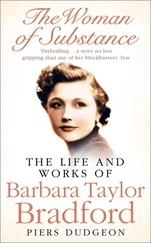Jo was born in 1941, in an old cotton-mill house on a cobbled street long gone to progress. ‘It was a slum and life was a struggle,’ she has said. There were seven boys and three girls in the family; two more children were lost in infancy. Jo was number four.
Her childhood was characterful, seamless, and independent of the wider world. This is reflected in her novels, as Queenie’s amazement shows when Biddy suggests a trip to nearby Blackpool in Her Father’s Sins : ‘Outside Blackburn, Auntie Biddy? Are we going outside Blackburn?’ For the town’s occupants, until Nosey-Parker Hindle purchased the first TV in Blackburn in 1952, the world beyond Blackburn didn’t exist.
Her Father’s Sins , Jo’s first novel, is a masterly, child’s-eye view of her upbringing in the 1940s and ‘50s, but her work is not simply an extension of her own childhood past for reminiscence’s sake. She is working things out, mythologising, and also sorting through her own feelings about what has passed. Angels Cry Sometimes , her fourth novel, is based on her mother’s struggle. Her father, Barney Brindle, was employed by Blackburn Council on the roads, and, like others frustrated by life at the tailend of the Industrial Revolution, he drank away his wages in the pub on a Friday night and sometimes vented his frustration in rages that terrified his children. At home, Jo’s mother, Mary Jane Harrison, survivor of the cotton mills, somehow kept the family together until Jo was fourteen, when she walked out, taking some of her children with her. These events, and in particular Jo’s loss of her father at such a crucial moment in her development, are as important to her fiction as the environment in which her childhood took place and of which, as we will see, they are an integral part. Her novels also take us farther back in time, so that we can see how that environment came into being. These were exciting, innovative times, as Jo observed in her novel, Outcast :
Cotton mills were going up at an unprecedented rate all over Lancashire, but here in Blackburn the programme of mill construction was staggering. Emma had inherited her papa’s own pride in these great towering monstrosities, and she knew all their names – Bank Top Mill, Victoria Mill, Infirmary Mill – and, oh, so many more! Cotton was big business, keeping the town a hive of bustling activity. No hard-working mill-hand ever grew rich by it as his wages were too meagre; but, for the man with money to invest, the opportunities grew day by day…
The series of inventions that triggered the Industrial Revolution speeded up first the spinning, then the weaving processes. They included the flying shuttle, the spinning jenny, the water frame, the spinning mule, the steam engine and the power loom. Then new transport systems – the railway and the canal – to and from ports at Liverpool, London and eventually Manchester vastly improved the supply and distribution network.
The earliest mills in Blackburn, such as Wensley Fold Mill (1775), King Street Mill (1817) and Whalley Banks Mill (1818), were opened to house the new spinning machines.
These mills represented a whole different way of life. Workers no longer owned their own wheels; instead of working in their own homes at their own pace, spinners would now have to work in their employers’ factories at the machines’ pace for new entrepreneurial masters. Many were drawn in from outlying villages, as livelihoods were threatened by the factory operations.
By 1800 there were seven thousand such operatives in Blackburn, representing around sixty per cent of the population. Twenty years later the number had more than doubled – a body of workers nearly 15,000 strong represented almost seventy per cent of the town’s burgeoning population.
The coming of the power loom greatly accelerated this shift from country to town. Power looms were first installed in Blackburn at Dandy Mill in 1825, from which time the writing was on the wall for hand-loomers. In the town’s most authoritative history, Blackburn: The Development of a Lancashire Cotton Town, Derek Beattie charts the transition as follows. In 1780, Blackburn’s population was five thousand. In 1801, it amounted to 11,980, with seven thousand hand looms in use. In 1841 there were some six thousand power looms in use and possibly as few as one thousand hand looms. In 1907, Blackburn was the cotton-weaving capital of the world; there were around 130,000 people, no hand looms, but 79,403 power looms in use.
Aiding and abetting production improvements was the new transport system. In 1770, building work began on the Leeds-Liverpool canal.
The Leeds to Liverpool Canal was a main artery from the Liverpool Docks to the various mills. Along this route the fuel and raw cotton which kept the mills alive was brought, thus affording a living to the many bargees who, with their families, dwelt in their colourful floating homes and spent most of their lives travelling to and from with their cargoes. This consisted mainly of raw cotton, unloaded from ships which carried it across the ocean from America.
Jo’s novel, Outcast , quoted above, tells us much about the workings of industry in the nineteenth century. The canal, which would run commercial traffic until 1972, reached Blackburn in 1810, easing transportation not only of raw cotton and cloth, but of coal, lime and building materials mined in the neighbourhood – goods for powering the cotton industry and enabling the building programme that would be so closely bound up with it. In the more recent Bad Boy Jack we get a time-honoured picture of a barge ‘moved along, pulled by a massive horse, loaded down with cargo and painted colourfully from stem to stern.’ But it is Emma Grady in Outcast , who takes us inside one of these great boats:
It was the first time Emma had ever been inside a barge, and it had been a great surprise. Not for a moment had she expected to see such a cosy and exceptionally pretty home as this. All the walls and ceiling were made of highly polished panels. In the living-quarters the walls were decorated with lovely brass artefacts – plates, old bellows and the like; from the ceiling hung three oil-lamps of brass and wood, each sparkling and meticulously kept; there were two tiny dressers, both made of walnut and displaying small china ornaments – which, according to Sal, were ‘put away when we’re on the move’; as were the china plates which were propped up on shelves beneath each porthole; the horsehair chairs were free-standing, but the dressers were securely fixed to the floorboards. There was also a small cast-iron fire, and the narrow galley which was well-stocked and spotless. In one of the two bedrooms there was a tiny dresser with a tall cupboard beside it, and a deep narrow bunk beneath a porthole. Emma had been astonished that everything a person might need could be provided in such a limited space.
The railway was the next fillip to industry, the Preston–Blackburn line opening in 1846. However, it was never the dominant force that the canal turned out to be, as Mike Clarke notes in Alan Duckworth’s Aspects of Blackburn. In 1851 the canal’s cargo business was leased to a group of local railway companies, including the Lancashire and Yorkshire Railway, which gave it a virtual monopoly on transport in East Lancashire. Mill owners, increasingly illserved by this monopoly, pressured the canal company to revoke the lease. By 1880 the Lancashire and Yorkshire Railway was laying off staff at Burnley because the canal had taken over much of their traffic. As a result, new boatyards sprang up and business boomed in those that were already servicing the canal.
In Vagabonds , Marlow Tanner builds up a canal cargo business – Tanner’s Transporters – and is part of this new boatyard boom:
Читать дальше












